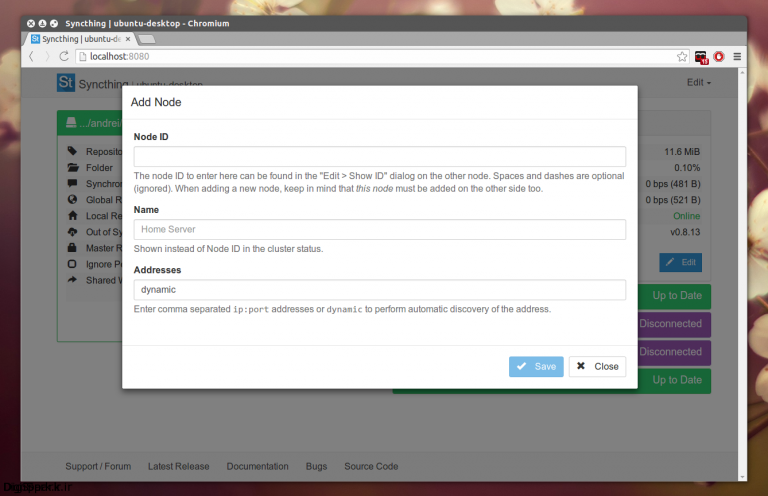
- #SYNCTHING VS BITTORRENT SYNC MAC OS X#
- #SYNCTHING VS BITTORRENT SYNC PORTABLE#
- #SYNCTHING VS BITTORRENT SYNC SOFTWARE#
I think it is nice to have chat and shared folders at the same place. This section might need pruning, the things listed might not be entirely free.Ī decentralised communication platform that allows file sharing.įeatures peer discovery with DHT NAT traversal encryption and authentication with PGP+OpenSSL gui to manage friends+groups additional functionality like chat, groupchat, voip.
#SYNCTHING VS BITTORRENT SYNC SOFTWARE#
The software that lit a fire under this project.Ī DropBox competitor that offers peer to peer file sync called 'DirectSync'. File synchronization is bidirectional, based on rsync, can be run manually, as scheduled task, or triggered on file changes. It is Peer to Peer (p2p) so no server required, but by convention, you can (or not) determine any device as a central server.Ī two way filesync script with fault tolerance, resume, soft deletion, conflictual file backups running on bash (linux, BSD and virtually any system supporting bash). Syncthing is released under the GPLv3 license. It specifies a protocol Block Exchange Protocol and a reference implementation. Under active development in Go, syncthing claims to be an "Open Source Continuous File Synchronization" solution. On top of that, it has several other advantages that are described on their website. It supports the whole feature set known from similar centralized approaches, such as Dropbox or Google Drive, all packed in a clean, extendable API. It provides a free, distributed solution that focuses on maximum security and privacy of both users and data. Hive2Hive is an open-source library, written in Java, for distributed, P2P-based file synchronization and sharing. Librevault is released under GPLv3 license. WebUI will arrive in the next releases.ĭocumentation and protocol specification are Work-In-Progress now. The protocol between Daemon and GUI is WebSockets. Sync daemon uses Boost, Crypto++ and Protocol Buffers. The scheme is registered within IANA URI Sechemes registry. UPnP and NAT-PMP port forwarding support.Librevault uses DHT implementation from Transmission, so it is fully compatible with Mainline DHT specification with IPv6 extensions. UDP BitTorrent Tracker discovery on the Internet (so, existing solutions, such as OpenBitTorrent are compatible with Librevault).UDP multicast node discovery on the LAN.All the data (and filenames) is stored on the clients, and transmitted only in AES256-encrypted state.
#SYNCTHING VS BITTORRENT SYNC PORTABLE#
The code is written in a portable manner, and it will be ported to other platforms later.
#SYNCTHING VS BITTORRENT SYNC MAC OS X#
Cross-platform: Linux, Mac OS X and Windows supported now.Windows- and Unix-attribute sync support: mode, uid, gid, windows attrib (experimental, optional).Symbolic link support (experimental, optional).inotify, fsevents, kqueue and ReadDirector圜hangesW API support for monitoring directory for changes.On a change of file, only the changed block will be transmitted, but not the whole file. Block-wise incremental synchronization.Using this type of Secret, peer can download, distribute, but cannot decrypt (and read) the folder contents.

Using this Secret, peer can synchronize with a folder, but cannot change its contents.

I have been trying to add that functionality, but it obviously takes a good deal of time to do so, and more than I currently have. He wants to potentially use this program in connection with their disaster relief efforts, but he needs it to have additional functionality, including the ability to synchronize between more than two computers and the ability to do block-level synchronization. After it was posted, I began communicating with a volunteer for the German federal disaster relief organization, THW. Recently, I posted my idea for a BTSync replacement here, below.


 0 kommentar(er)
0 kommentar(er)
